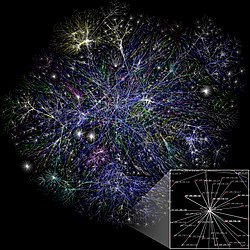260 ⟶ Porphyry's Isagogê and Early Semantic Net
Porphyry wrote Isagogê which categorized knowledge and logic...Year
260
1275
1966
1975
🕸️ Porphyry's Isagogê and Early Semantic Net
Porphyry wrote Isagogê which categorized knowledge and logic, including a drawing of what would later be called a "Semantic net".⟶

LogicKnowledge RepresentationSemantic NetworksPhilosophyAncient GreeceCategorizationConcepts
 Greece
Greece⚙️ Ramon Llull's Ars Magna and Mechanical Reasoning
Ramon Llull, Mallorcan theologian, invents the Ars Magna, a tool for combining concepts mechanically based on an Arabic astrological tool, the Zairja. Llull described his machines as mechanical entities that could combine basic truth and facts to produce advanced knowledge. The method would be developed further by Gottfried Wilhelm Leibniz in the 17th century.⟶

LogicMechanical ReasoningKnowledge RepresentationArs MagnaPhilosophyCombinatorial SystemsEarly AI Concepts
 Spain
Spain🕸️ Demonstration of Semantic Nets
Ross Quillian (PhD dissertation, Carnegie Inst. of Technology, now CMU) demonstrated semantic nets.⟶

Semantic NetworksKnowledge RepresentationAICarnegie Mellon UniversityQuillianConceptual Modeling
 United States
United States🖼️ Minsky Publishes on Frames for Knowledge Representation
Marvin Minsky published his widely read and influential article on Frames as a representation of knowledge, in which many ideas about schemas and semantic links are brought together.⟶
Knowledge RepresentationFramesMarvin MinskySchemasSemantic NetworksCognitive Science
 USA
USA